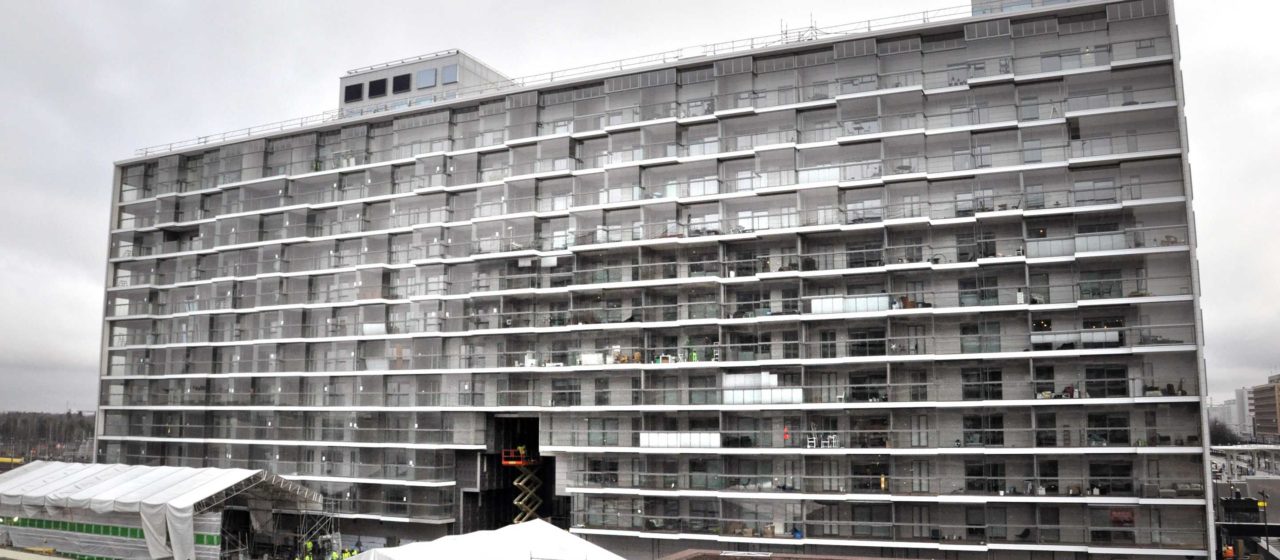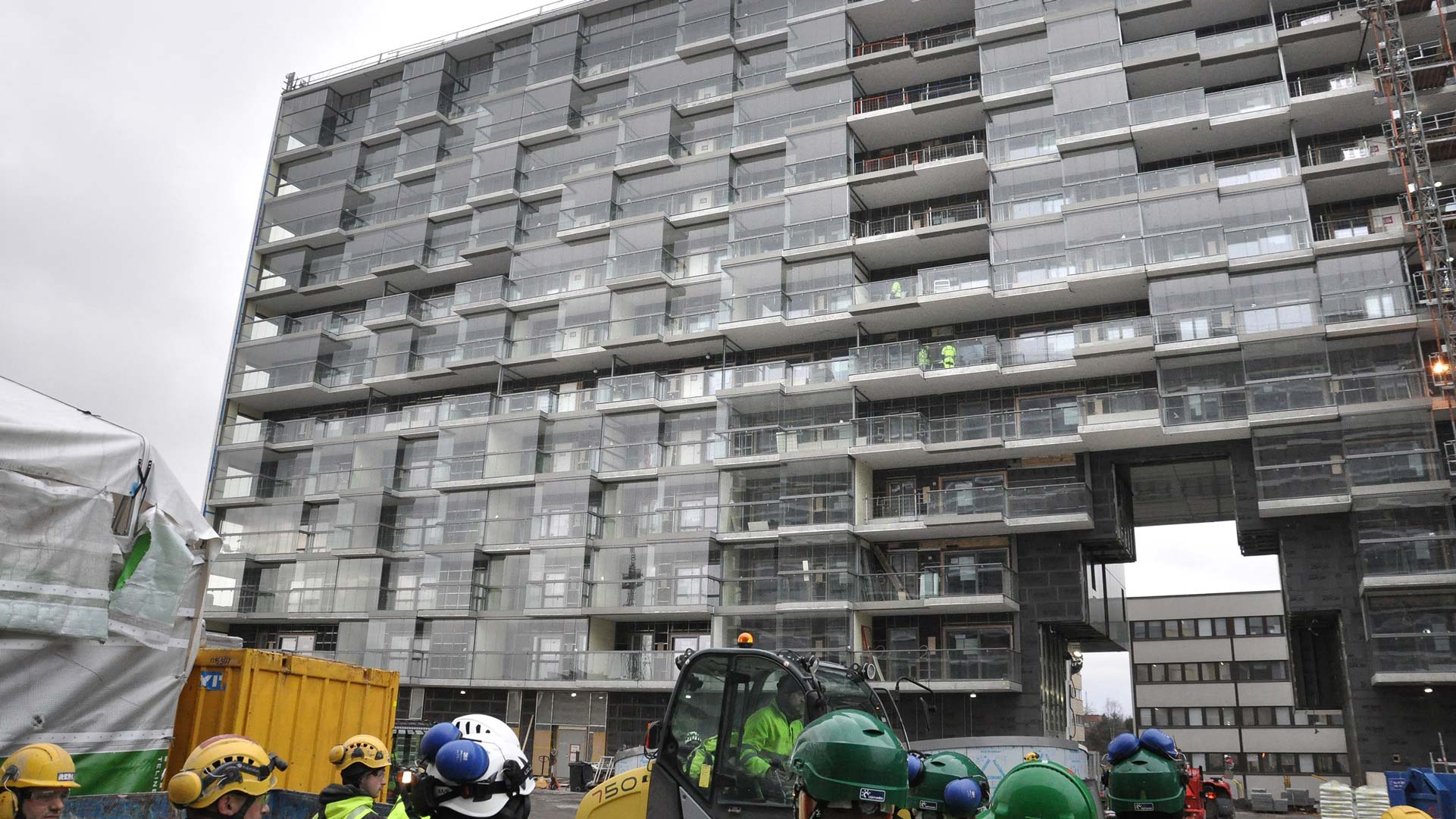
Construction site logistics and its relevance to project success
Major changes in the urban landscape, over the past five years, have set new requirements for construction site logistics. Nowadays, urbanisation allows for creating architecturally more unique building objects. It also makes it possible to construct higher buildings and to select more variable facade solutions for them. Buildings are set increasingly closer to each other and they are often bordered by pavements and streets. Moreover, the yards of new residential buildings are frequently small and cramped, as a result of the desire to locate as many buildings on the same site as possible, to maximise the use of space. Furthermore, car parks must be fit for demanding applications that allow for locating parking lots of housing companies underneath their roof. The rooftops can then be used as common yard areas.
Paying attention to the urban landscape changes in our installation work calls for a seamless cooperation with our orderers and a preparation of a logistics plan together with them. An excellent logistics plan for the construction period ensures a smooth, safe and cost-efficient implementation, from the viewpoint of every party.
What are the requirements set by changes in the urban landscape to construction site logistics?
It is important for project success to reserve enough time for the planning of construction site logistics operations. We at Lumon know that tight schedules may increase work-related stress, unless we have reserved enough time for the planning. In our opinion, it is advisable to use more time at the planning phase, to make it possible to complete working phases in due time and in the right order.
Lumon makes sure that goods are brought directly to correct locations on a ‘just in time’ basis through working in a seamless cooperation with the orderer’s responsible site managers. We have improved our product packaging system, to make it easy to lift the glass goods onto the balconies where their final storage place is. This will release site yard storage spaces for site purposes alone. The goods must have been ordered with correct measurements in advance. They have then been manufactured and delivered to correct locations on the balconies. Finally, they will be installed by fitters who complete all duties from inside the balcony.
It may be challenging to ensure safe working conditions at all times, if our communication and the time used for the planning of logistics operations are inadequate. The completion of a construction project generally requires the use of locations, like yard and street areas, where construction work is presently underway on several phases and construction vehicles are moving into and out of the site. If these factors are not considered before site duties begin, they may put people at unnecessary risk of injuries, or cause damage to property.
Effective logistics arrangements may cut down many of the costs, for example rental fees caused by scaffoldings, street areas and lifting gear. The inadequate planning of logistics may typically result in additional work and delays in schedules. It is therefore best to reserve enough time for the planning of logistics operations. Locating goods in their correct locations, while the construction work is in progress, is one of the significant factors to guarantee that the goods remain intact and their moving does not cause additional costs. The first priority is, however, to enable end users, i.e. residents, to enjoy magnificent views through faultless Lumon glazing products from their own balconies.
-
[PRO BLOG] Maximizing balcony space: Smart solutions for modern living
Read more…Balconies have long been a valued feature in residential architecture, offering a connection to the outdoors and enhancing the aesthetic appeal of buildings. However, their role has evolved significantly in recent years. No longer just decorative, balconies are now valuable extensions of indoor living spaces, particularly in high-rise urban settings. With the rise of urbanization and changing residential needs, the demand for multifunctional, adaptable, and energy-efficient balcony solutions has never been greater.
-
[PRO BLOG] Lumon eRailing: A new opportunity for solar energy in urban living
Read more…Construction and housing are undergoing a transformation as energy efficiency and sustainable solutions become increasingly important. Lumon eRailing is a new solution that integrates solar energy into urban living. It allows housing companies to generate electricity from their balconies without compromising the appearance or functionality of buildings.
-
[PRO BLOG] Sufficient ventilation and passage of light key for sustainable balcony design
Read more…In modern construction, creating balconies that are functional, sustainable, and aesthetically pleasing is no small task. Developers face challenges such as ensuring proper ventilation to prevent moisture buildup, maximizing natural light for better energy efficiency, and designing spaces that stand the test of time. Striking the right balance between these elements is essential for long-lasting, usable outdoor spaces.




